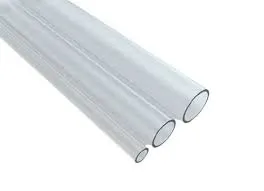Des . 13, 2024 21:19 Back to list
pp board
Exploring the World of PP Board A Versatile Material for Modern Applications
In today’s fast-paced world, the quest for materials that combine durability, versatility, and cost-effectiveness has led to the emergence of various innovative solutions. One such material is Polypropylene (PP) board, a plastic sheet derived from polypropylene resin. Renowned for its wide array of applications, PP board is increasingly becoming a go-to choice for industries ranging from construction to advertising.
What is PP Board?
PP board is a lightweight, plastic sheet that is known for its excellent resistance to chemical corrosion, moisture, and impact. Its unique composition makes it suitable for both indoor and outdoor applications. Often produced through a process of extrusion, the sheets can vary in thickness, color, and finish, which makes them adaptable to the specific needs of users. Additionally, PP boards are available in various textures and can be easily fabricated using common tools, allowing for a high degree of customization.
Key Advantages of PP Board
One of the most significant advantages of PP board is its remarkable durability. Unlike traditional materials like plywood or MDF, PP board does not warp, splinter, or swell when exposed to moisture, making it an ideal choice for environments prone to high humidity or water exposure. This characteristic is particularly beneficial in industries such as construction, where materials are often subjected to varying climatic conditions.
Another appealing aspect of PP board is its lightweight nature. This attribute facilitates ease of handling and installation, reducing labor costs and improving efficiency on job sites. Furthermore, its chemical resistance means it can endure exposure to a wide range of substances without degradation. As a result, it finds applications in chemical storage, lab use, and food processing settings.
pp board

From an environmental perspective, PP board is also more sustainable compared to many other materials. Polypropylene is recyclable, which contributes to the reduction of waste in landfills. Many manufacturers are now focusing on producing PP boards from recycled materials, promoting a circular economy and appealing to environmentally conscious consumers.
Applications of PP Board
The versatility of PP board enables its use in a multitude of applications. In the construction industry, it is often employed for making temporary structures, signage, wall panels, and even partitions. Its impact resistance makes it suitable for high-traffic areas where durability is essential.
In the realm of advertising, PP boards are widely used for making posters, display boards, and promotional materials. Their ability to withstand outdoor elements allows for prolonged use in various advertising campaigns, regardless of weather conditions.
Moreover, PP board has found its niche in the packaging industry. It can be used to create protective packaging solutions, such as boxes and containers, that safeguard products during transportation. Its lightweight characteristics help reduce shipping costs, while its robustness ensures product safety.
Conclusion
In summary, PP board is an innovative material that offers a blend of durability, versatility, and sustainability. Its numerous advantages make it an attractive option for a diverse range of applications across various industries. As we continue to seek materials that meet both functional and environmental needs, PP board stands out as a material that fits the bill. Whether for construction, advertising, or packaging, the future of PP board is bright, paving the way for more sustainable practices and innovative solutions in material science.
-
Durable Glossy PVC Rigid Sheet | Premium High-Shine Panels
NewsAug.26,2025
-
Durable PP Rigid Sheet: Lightweight, Chemical Resistant Solutions
NewsAug.21,2025
-
PVC Grey Sheet for Extraction: Chemical Resistant & Durable
NewsAug.19,2025
-
Durable PVC Pipe Fittings for Plumbing & Irrigation Needs
NewsAug.18,2025
-
HDPE Steel Belt Reinforced Spiral Corrugated Pipe | High Strength
NewsAug.17,2025
-
HDPE Pipe Fittings: Durable, Leak-Proof Solutions
NewsAug.16,2025

